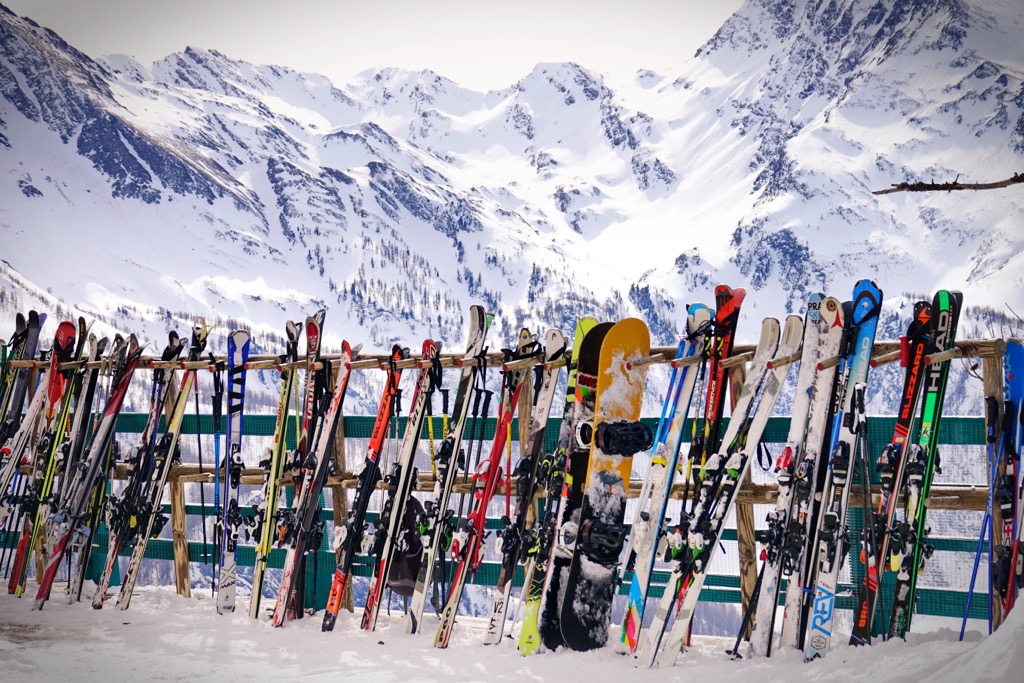Get PeakVisor App
Sign In
Search by GPS coordinates
- Latitude
- ° ' ''
- Longitude
- ° ' ''
- Units of Length
- Temperature
Share×

Scan the QR code and open PeakVisor on your phone
❤ Wishlist ×
Choose
Delete
Prali Ski Area is one of more than 40 ski resorts in the Piedmont region in northern Italy. The ski area is located in the Cottian Alps range of the Western Alps. The area isn’t as high as some others in the region: its base elevation is 1,450 m (4,757 ft) and the top is 2,510 m (8,234 ft), with a maximum vertical drop of 1,060 m (3,477 ft). Hence, most of the terrain is below the treeline. Prali’s main feature is forested freeride descents in a quaint, uncrowded setting. At around 20 euros, the ski pass can only be described as dirt-cheap. In fact, everything is mind-blowingly affordable in this region of Italy, including transportation, dining, accommodation, and others. At Prali, two button drag lifts and two fixed-grip double chairlifts serve 11 pistes totaling 9 km (5.6 mi). The ski season typically lasts from early December to mid-April, although this is dependent on snow conditions.
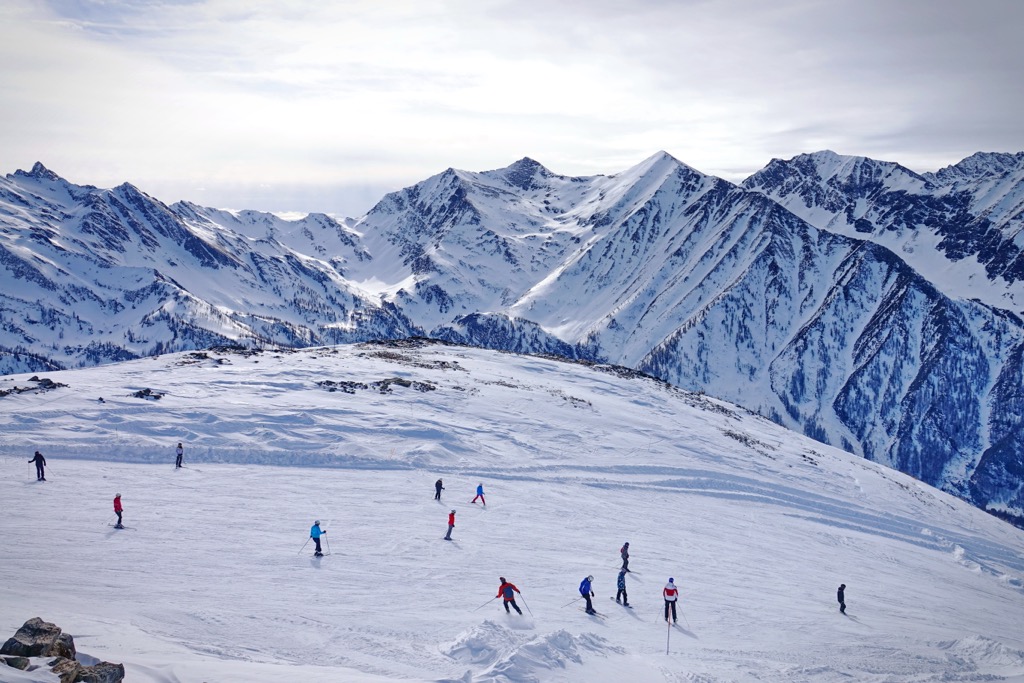
Prali Ski Area is located in the Italian Piedmont, a region famous for its periods of heavy snow followed by long stretches of sunshine. Geographically, it is the Cottian Alps range of the Western Alps.
The ski area is situated within the namesake village of Prali at the western border of the Conca Cialancia Nature Park (Parco Naturale di Conca Cialancia) and the eastern border of the Queyras Nature Park (Parc Naturel du Queyras) in France. It is only a few kilometers from the French border. Despite its proximity to France, don’t expect many folks to speak French or English.
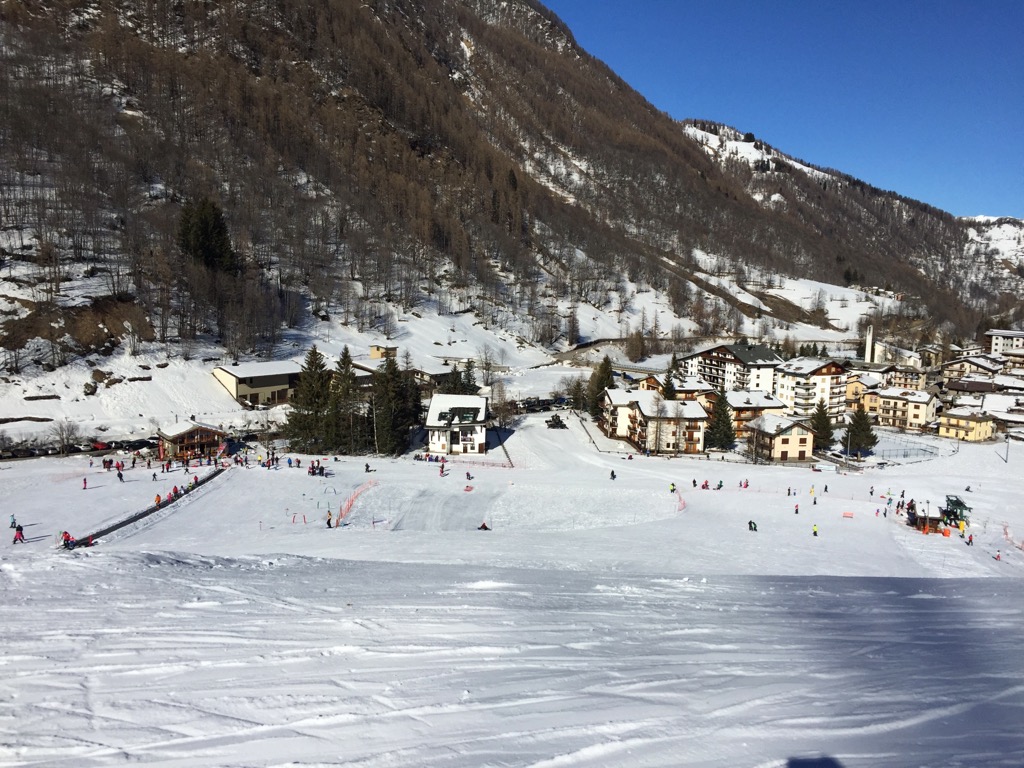
The resort is on the southern slopes of the namesake Prali Valley, which means that it is mostly north to northwest-facing. Some descents on the skier's left face directly west and can suffer from a lack of snow later in the season.
Although Prali is mostly below the treeline and doesn’t incorporate any high alpine peaks, it is surrounded by alpine terrain. The area’s slopes occupy the northwestern aspect of the Cappello d’Envie (2,638 m / 8,655 ft), whose summit is just above the top of the Bric Rond chairlift. The freeride lift-accessible terrain is hemmed to the east by the Punta Gardetta (2,737 m / 8,980 ft) and to the west by the L’Aigo Groso stream canyon. Behind the Cappello is the high alpine ridge of the Conca Cialancia serving as a magnanimous backdrop to the ski area and the Prali Valley.
The northern end of the valley is even more dramatic. Steep rocky slopes and massive couloirs sweep down 1,500 m (4,921 ft) into the village. The Punta Vergia (2,992 m / 9,816 ft) is just shy of the 3,000 m (9,842 ft) milestone but you wouldn’t know it by looking at its striking south face. Right behind this ridge sits the Val Troncea Nature Park (Parco Naturale della Val Troncea).
The village of Prali itself is wonderfully undeveloped and devoid of the customary trappings of the European megaresorts. While the architecture isn’t necessarily the finest Italy has to offer, the deep valley surrounded by nature parks makes this a special setting.
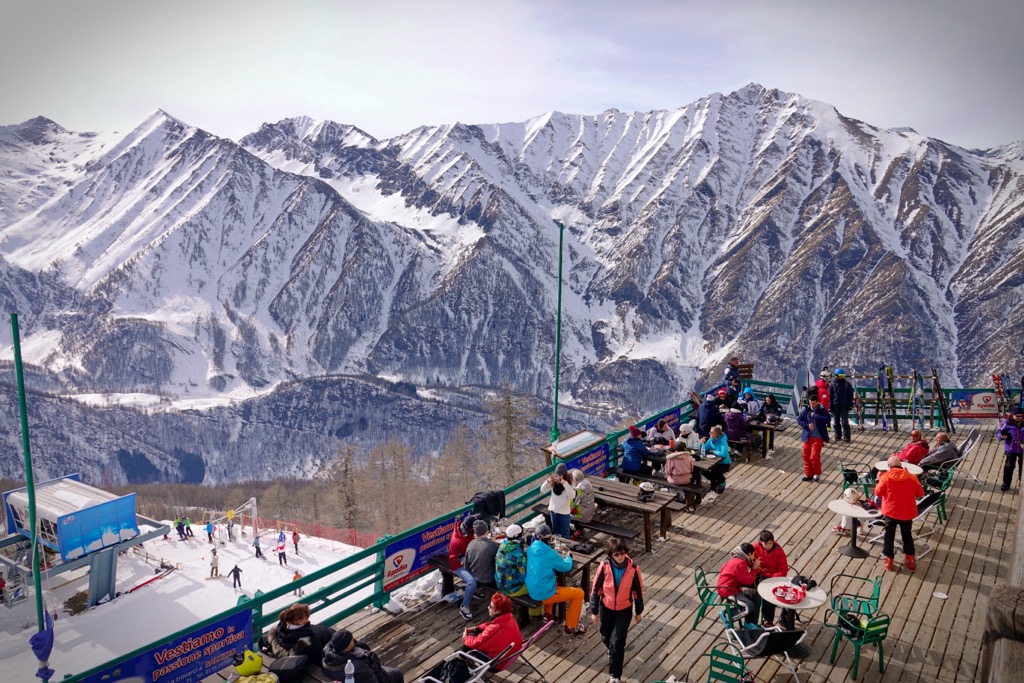
Getting to Prali Ski Area can be quite complicated by European standards of traveling. Many ski resorts in the Alps have a closer major airport and a much easier access road than Prali. So the vast majority of visitors drive here from the nearby cities rather than fly internationally to stay for a vacation.
There is an airport in Turin, but finding direct flights can be difficult if you are coming from farther than the European Union.
Milan always has cheaper flight options and better deals on car rentals than Turin. There are direct flights to Milan from anywhere in the world. Depending on where you are coming from, the conveniences of traveling to Milan are probably worth the extra 90 minutes of driving time.
Near Milan, there is a Bergamo airport — a local air hub with many European low-cost airlines.
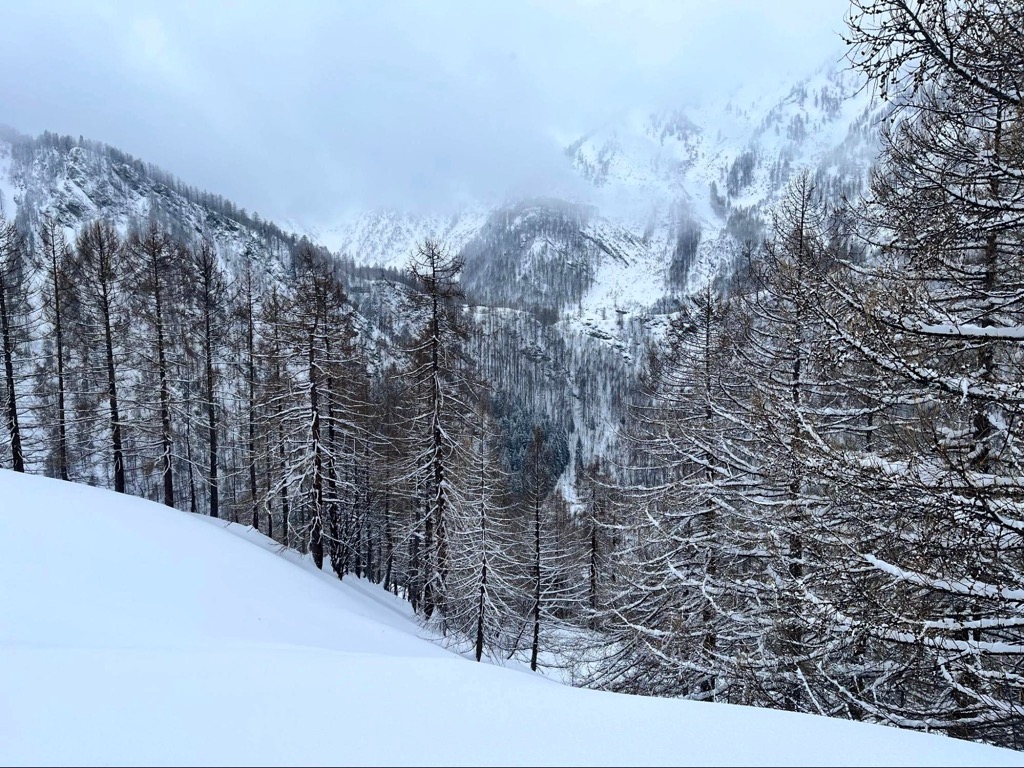
The village of Prali is located in a deep valley nearly 1,000 m (3,300 ft) above the nearest small town of Perosa Argentina, about 20 km (13 mi) away. Almost all of the elevation is gained in a short 15 km (9.4 mi) stretch of road.
The road is well-maintained during and after snowstorms: There is a small army of tractor-plows patrolling the narrow, steep switchbacks. Still, this is not a drive for the faint of heart. I’ll leave it at that.
The nearest city to Prali is Turin, located 90 km (56 mi) away by car. The drive takes about 90 minutes in clear road conditions — it can take much longer in inclement weather. An hour and a half further to the east is the next closest city of Milan.
In general, northern Italy is by far the easiest region to drive from because the Po River Plain offers quick and easy autoroute (highway) travel. But those driving from France, Switzerland, Austria, Germany, and all points north and west will have to cross the Alps, which presents its own set of challenges.
Once you’ve arrived in Prali, you don’t need to worry about parking. There is abundant free parking at the base of the resort. Parking is also possible along the road if that fills up.
If you want to take the train to Pinerolo but avoid the final two bus transfers, I am certain that taxi services are available. However, unless you read and write Italian, this information is elusive on the internet. I am also not sure of the cost. The representative at the train station will likely be able to assist you.
Like most places in Europe, Italy has a great bus and rail network. Trains run as far as Pinerolo from both Turin and Milan. From Pinerolo, take the GTT bus to Perosa Argentina, then transfer to another bus to Prali. This last bus only runs a couple of times a day so there will be some layover time. It’s more complicated than driving, but if you want to keep costs down or don’t want to deal with a car it is still possible to go skiing in Prali. There are also buses to Perosa Argentina from Sestriere (Via Lattea) Ski Resort — the next closest ski area to Prali, which is the largest in northern Italy outside of the Dolomiti Superski Area.
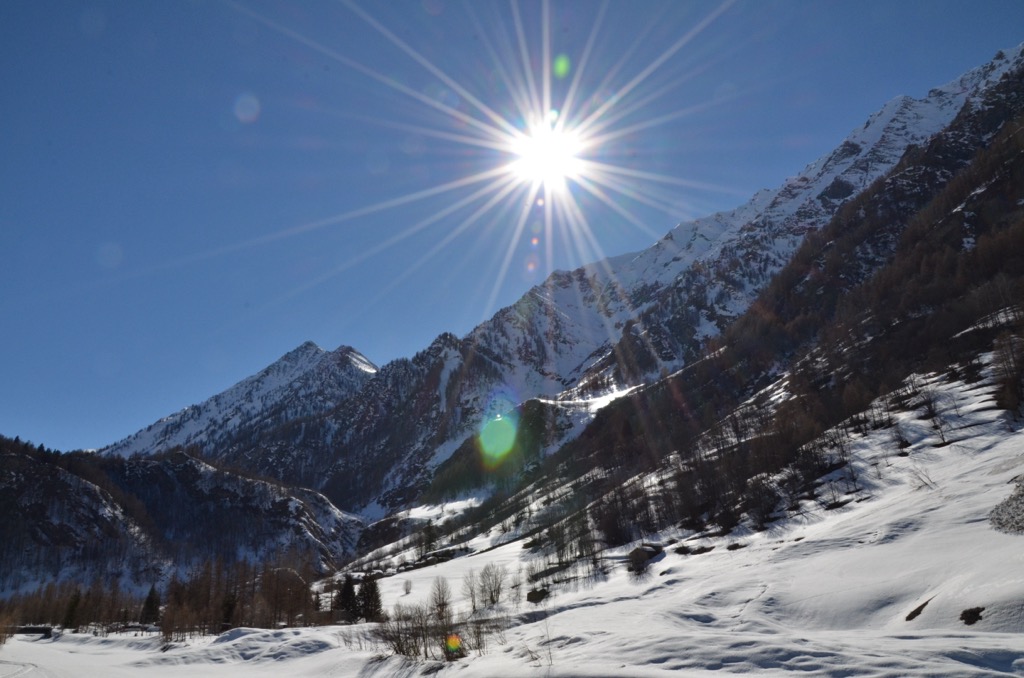
The village is tiny so your own two feet will get you wherever you need to go — even if they are still encased in ski boots.
The ski season in Prali generally lasts from early December to mid-April, although this is subject to snow conditions.
On average, Prali receives quite a bit of snow. The climate is characterized by heavy snows from the east — often up to a meter (0.6 ft) at a time — interspersed with long periods of sunshine and high pressure. Often, it only takes one such big storm from the east to completely bury the resort and set up the base for the season. However, it’s impossible to predict when this storm will come. Prali can get hammered with a big storm anytime between November and May.
Prali is a small resort, but it becomes microscopic when there is not a deep enough base to ski in the trees. Luckily, the ski area’s slopes are north facing and in a deep valley and don’t receive too much sun until later in the season.
Also, keep in mind that the resort is situated at a low altitude between 1,450 m (4,757 ft) and 2,510 m (8,234 ft) and can be subject to rain and warm conditions from time to time, even in the depths of winter. December and January are most likely to offer cold weather and a favorable rain-snow line, but there may not be a good base yet.
Late January to early March may offer the best chance for cold snow, big storms, a solid base, and limited sun-crusted snow. Late March and April are susceptible to warmth and poor snow conditions, but can also offer epic conditions and ski touring access.
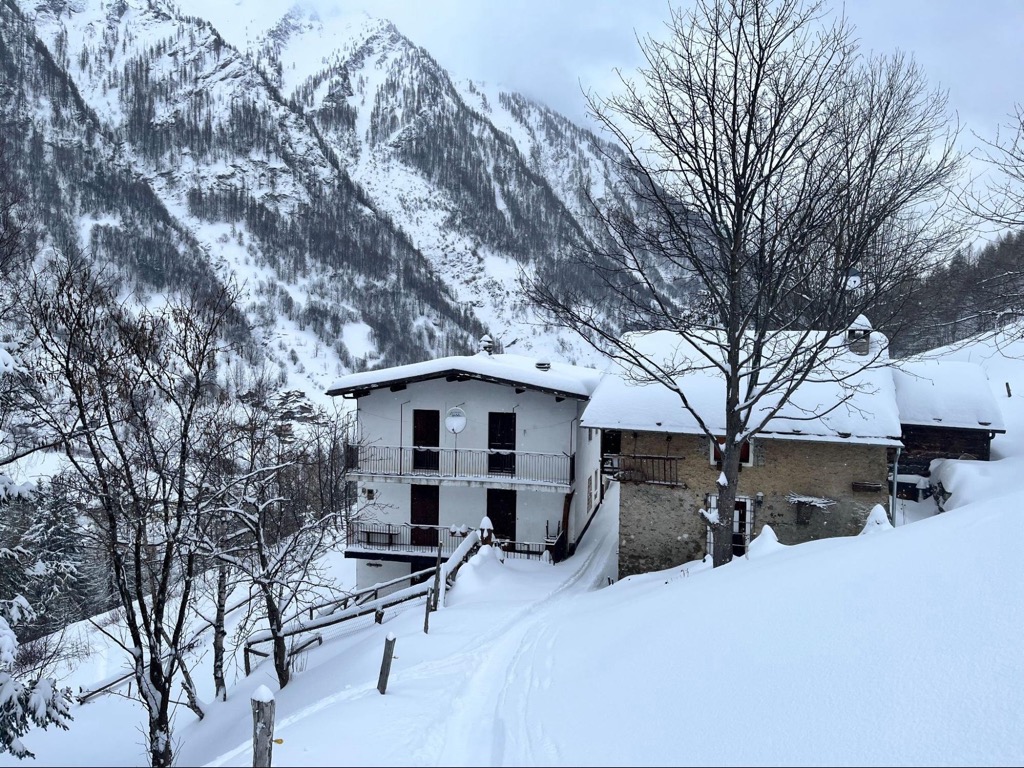
The snow and other weather conditions in Prali Ski Area are hit-or-miss. They can be epic or terrible, sometimes from one day to the next. In this way, a ski trip to Prali is a gamble compared to the large, snowsure resorts of the high Alps. However, Prali is absolutely magical when it’s good.
Prali Ski Resort is located on the eastern edge of the southwestern Alps. The vertical relief of the Alps range is massive, which is great for skiing, but it also means that storms are blocked by the high mountains. For this reason, Prali doesn’t get storms from the north or the west. Prali does well with storms from the south and the east, and okay with storms from the southwest. Fortunately, storms from these directions tend to have a lot of moisture.
As a result, Prali receives several meters (feet) of snow per annum on average from one of these systems and the skiing can sometimes last into May. Unfortunately, this is not the most common storm track in the Alps. In general, storms come from the west, northwest, or north which means the alpine rim of France, Switzerland, and Austria receive the most frequent snowfalls. Favored locations in these countries receive at least twice as much snow on average than Prali.
Therefore, snow and weather conditions in Prali can be described as ‘feast or famine’. When the snow is falling, keen skiers will find an abundance of untracked snow in the vast forests surrounding the lifts. The powder feast may last for days on end.
However, the big snowfalls are interspersed with weeks of Mediterranean high pressure. This makes for nice afternoons in the sun but scratchy snow conditions on the slopes.
Most years Prali has a good base and skiing in the trees is an appealing proposition. Be warned, however, that during a bad year you may not be able to ski the forest. Most people will quickly get bored of the limited pistes. Additionally, one rainstorm can turn amazing snow conditions into a disaster. Sometimes the wet snow will freeze over again and turn the mountain into a sheet of ice.
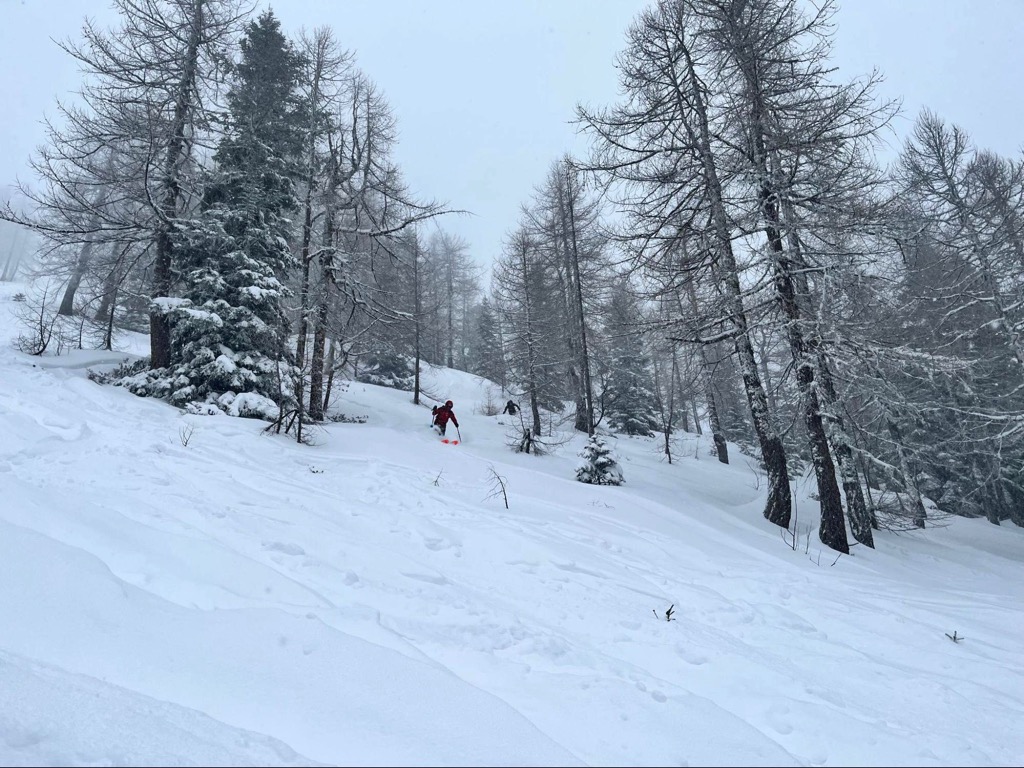
The Prali Ski Area mountains usually have enough snow to go skiing by January. Sergei Poljak
Prali Ski Area’s small size makes it incredibly easy to get around:
Discovering the areas off-piste at Prali is much more complicated than learning the limited resort layout. The ski area provides a map that is of some use. However, it doesn’t include the many intricacies of this terrain. A topographic map, like those found on PeakVisor, can also be very helpful.

The official map of the Prali Ski Resort Freeride Area. Sergei Poljak
Prali Ski Area is located on a steep mountain, so there is very little skiing for beginners — just about 2 km (1.2 mi) out of 9 km (5.5 mi) total. The Baby Ghigo lift will keep kids occupied for some time, but the main slopes are all intermediate and difficult. There is no easy way down the mountain. No skiers should load the lift unless they are comfortable skiing a very long red piste that serves as the easiest way back to the base station.
The lift-accessible terrain at Prali reaches just above the treeline. Therefore, most of the ski terrain is in the trees. There is a nice section of open alpine skiing at the top of the mountain, and the pistes are cut wide enough to give those parts of the upper mountain an alpine feel. This type of terrain is accessible only from the Bric Rond and Cialet, the double chairlift that goes to the top of the mountain.
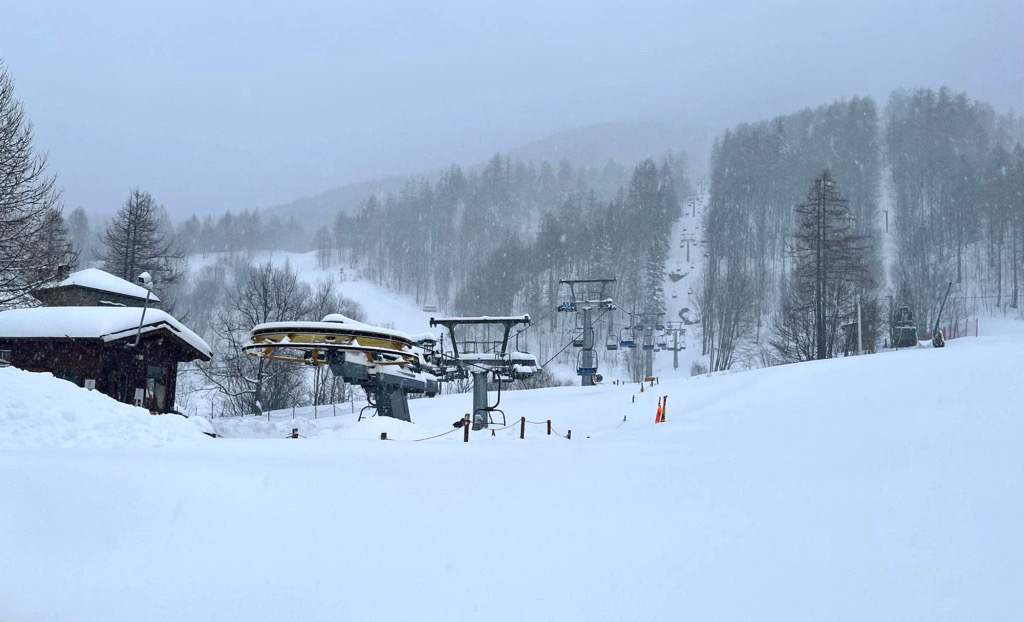
Although there is a limited amount of alpine skiing compared to most other resorts in Europe, the tree skiing here is incredible. Here’s why:
These characteristics all contribute to the fact that larch trees offer some of the best tree skiing in the world.
Slopes
Ski lifts
Other features and services
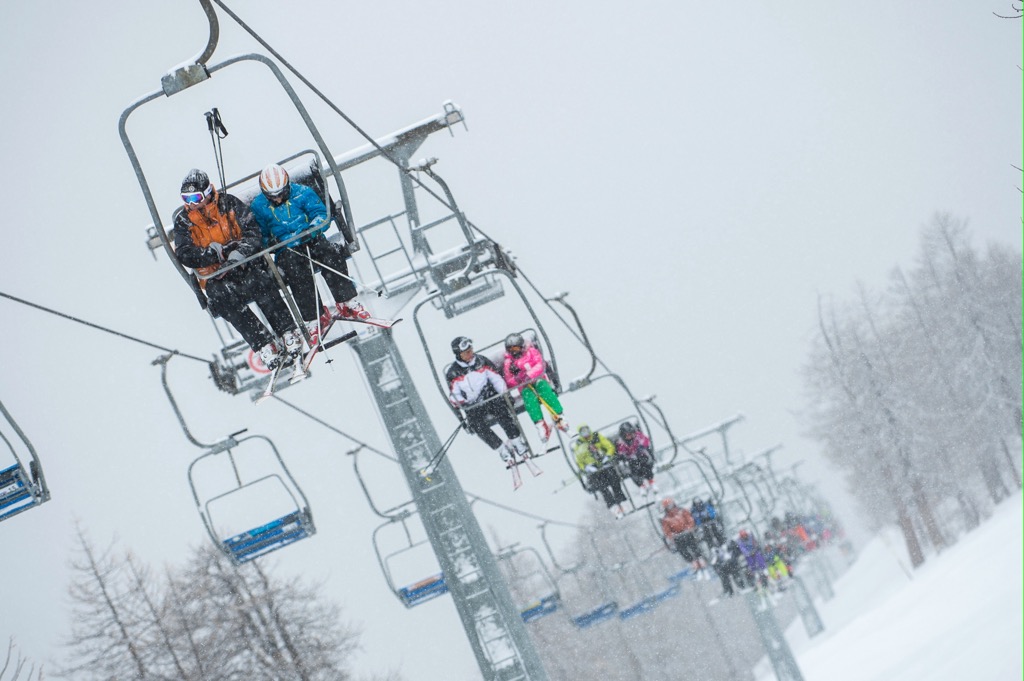
There is a groomed track that runs from the upper reaches of the valley, through Prali, to the start of the river canyon that marks the start of the descent into Perosa Argentina. It may vary depending on snow conditions but there is often about 15 km (9.4 mi) of track spread out over the valley.
As Prali is situated in a long flat valley split by a river running along its center, there are endless opportunities for cross-country skiing or snowshoeing around the valley without following a trail system. Watch out for the huge avalanche paths running down the North side of the valley.
The lift-accessible freeride routes are essentially backcountry terrain at Prali Ski Area. It is not patrolled, and there is no avalanche control, signage, or boundary markers. all the usual avalanche and backcountry precautions apply.
It’s possible to ski freeride descents even when the upper mountain lifts are closed. You just have to traverse either to the skiers’ left or right.
But don’t expect to show up here and find the best descents on the first day. There will be lots of bushwhacking and sketchy exits. Most routes funnel into decent exits but if you don’t know your way around you will be picking your way through some sections until you learn.
Naturally, the best freeride tree descents start from the top of the Bric Rond. Not only are the trees nicely spaced at the top of the mountain, but you can traverse farther over and access terrain that is simply too far over to traverse from the lower chair. Some descents end up in the valley to either side of the resort and require a short walk or skate ski back to the lift.
Prali Ski Area is surrounded by dramatic peaks with big faces and couloirs. Using only a modicum of imagination, those looking to branch out of this terrain will have no trouble finding potential lines in the surrounding mountains. Additionally, there are a few itineraries outlined on Prali’s Freeride map that I posted in the Ski Area Map section.
So far, I have not ventured beyond the terrain accessible from the lifts and cannot comment on specific routes.
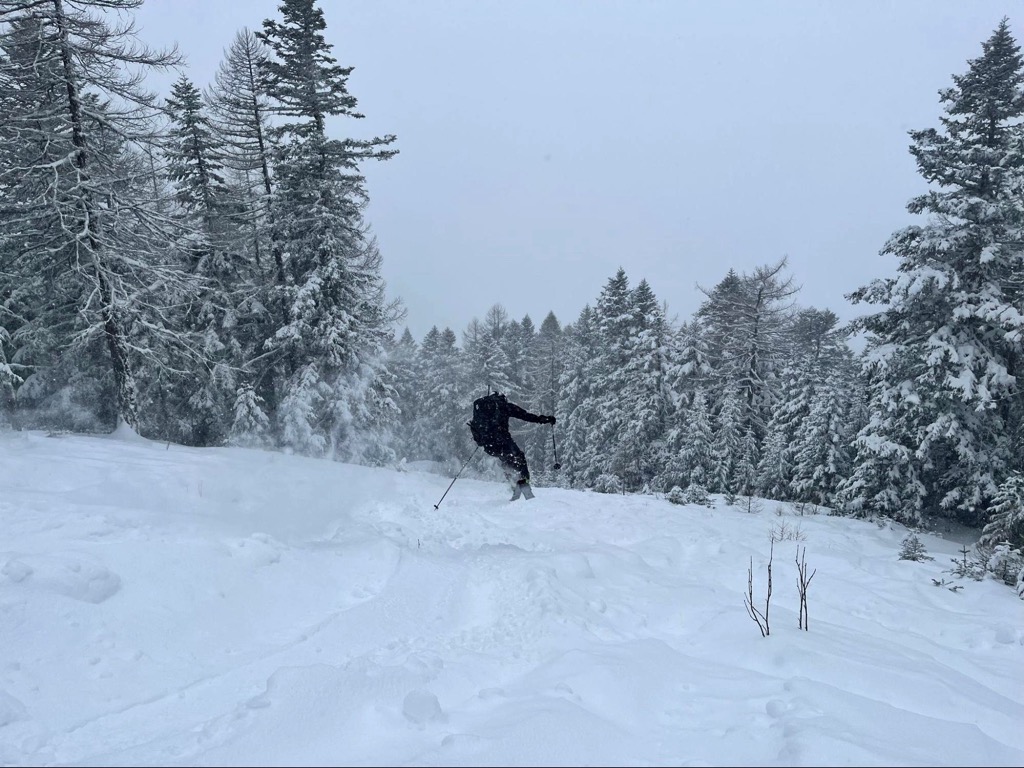
As in other Italian and world resorts, two basic types of ski passes are available in Prali: day pass and season pass.
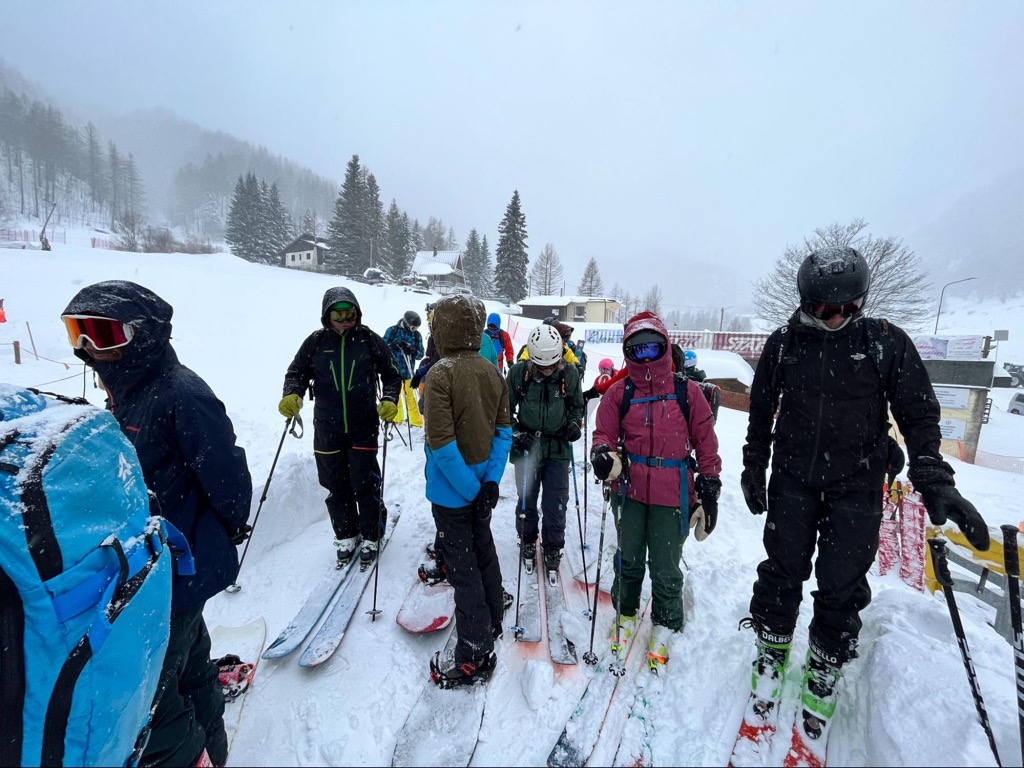
While at the Prali Ski Resort, stop by the official tourist center of the village of the same name to learn more about it and the region locally. Of course, there is a similar office in Turin.
Associazione Turistica di Prali
Fraz. Ghigo, 1/bis, 10060, Prali, Piedmont, Italy
+390121807418
Turismo Torino e Provincia
Piazza Castello, Via Garibaldi, 10121, Turin, Piedmont, Italy
+39011535181
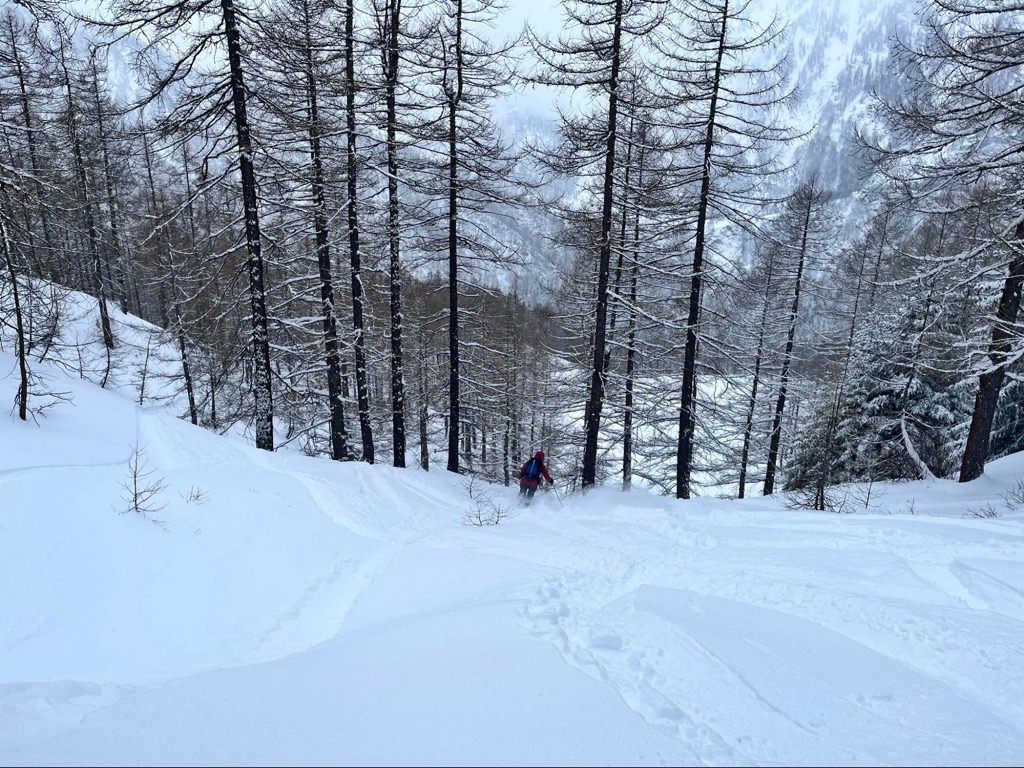
Italy is known for its food and wine, and you will find both at wonderfully attractive prices in this village of Prali. In my limited experience, the food is hearty, the price is right, and the setting is beautiful. There are also restaurants in the town of Perosa Argentina, but they don’t offer as nice of an experience. I recommend staying in Prali for lunch and dinner.
Don’t bother packing lunch on the mountain. La Campannina, the restaurant and lodge at the mid-station of the ski area, is convenient, affordable, and delicious. It’s a warm and cozy venue to recharge after a long morning of skiing. When the sun is out, the deck offers abundant sunshine to go with your coffee. There is a selection of panini (Italian sandwiches) downstairs, but the delicious hot lunches are upstairs. It’s standard Italian fare: polenta, lasagna, short rib, etc., — and it hits the spot.
As the sun sinks below the peaks and night settles on the village of Prali, skiers will begin to venture out in search of an evening meal. They’re lucky. Several locales are offering traditional Italian Alpen-fare. If you’re looking for some other type of food, you’re not going to find it. Prali is authentic and true to its roots.
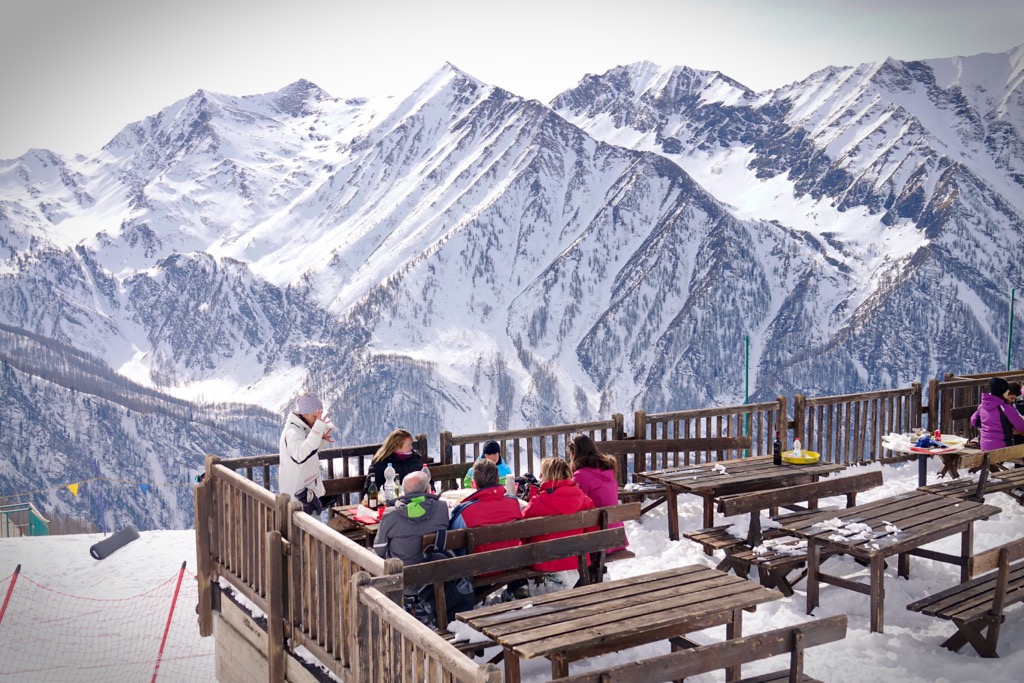
Accommodation at Prali Ski Area is rustic to the extreme. Maybe a little too extreme, depending on your tastes.
For starters, I recommend staying in Prali itself rather than Perosa Argentina, or anywhere else down in the valley. It’s not worth what little amount of money you save by staying down there — the town of Prosa Argentina leaves something to be desired. Prali at least has a peaceful and traditional vibe.
Because the village is a bit behind the times, it’s not as straightforward to find and book accommodation online. There are several hotels in the village of Prali, but they don’t seem to offer booking services over the internet. You have to call, which may be difficult depending on where you live. Moreover, the usual hotspots of Airbnb, VRBO, and Booking.com don’t have many options listed.
Another thing to consider is how little English is spoken in these parts. A smartphone translation app could be useful here.
The Miramonte, which is also a hotel, is quite large and has plenty of rooms. Carlos always has a spot available when we show up on short notice.
A few large condominium buildings throughout the village likely have short-term rentals for those looking for an apartment rather than a hotel room. There are also several B&Bs in the village.
In all honesty, unless it’s the Christmas holiday, you could roll up to this village and find a place to stay on the spot. There is simply nobody here. Alas, I realize this is not a viable way to travel for many people.
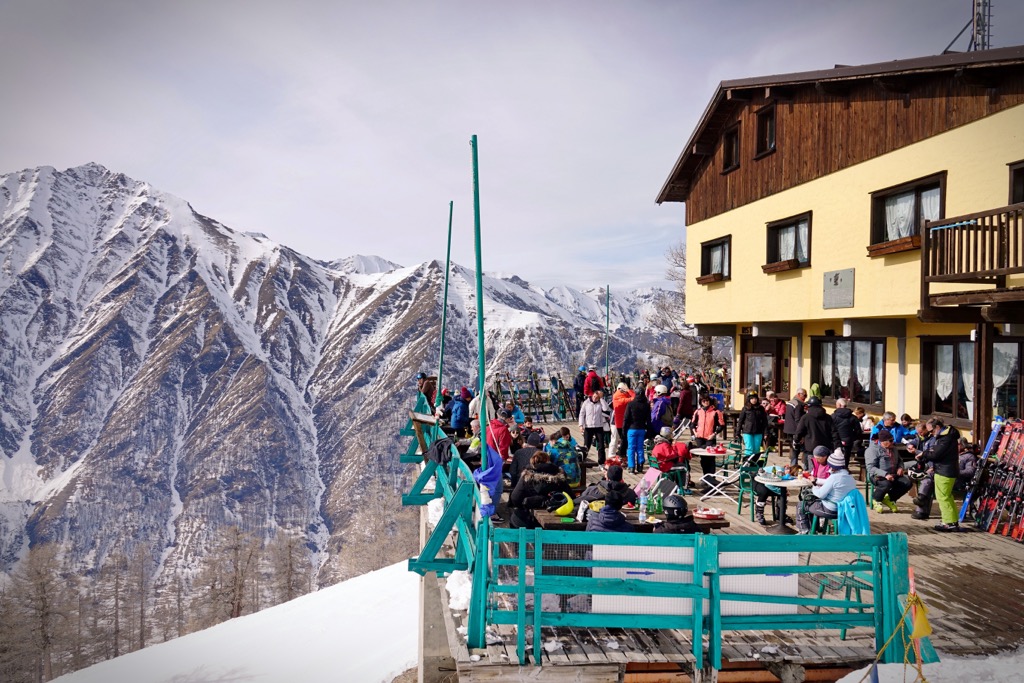
Prali is a minuscule village in a remote part of the Italian Alps - there is not too much going on in town. After having spent some time in the area, I don’t think there are ‘events’ like those you would find at an Austrian party resort. Without speaking Italian, it’s difficult to find information about potential goings-on using the internet. This seems to be a town where word-of-mouth dominates.
There appear to be full-moon dinners offered at the Mid-mountain restaurant, La Capannina: Le Cene di "La Capannina."
After a solid day of skiing, most of the folks on the mountain that day will congregate at the local pub “Mirage.” This underground joint is located right in the ski resort’s base area next to the ticket office. It’s pretty standard. There are a few beers on tap, some snacks, Italian coffee, and a few games in the back. It’s warm, dry, and cozy. This is the perfect setting for a tired body to melt into a seat after a physical day on the slopes. The bar at the Miramonte also attracts a crowd.
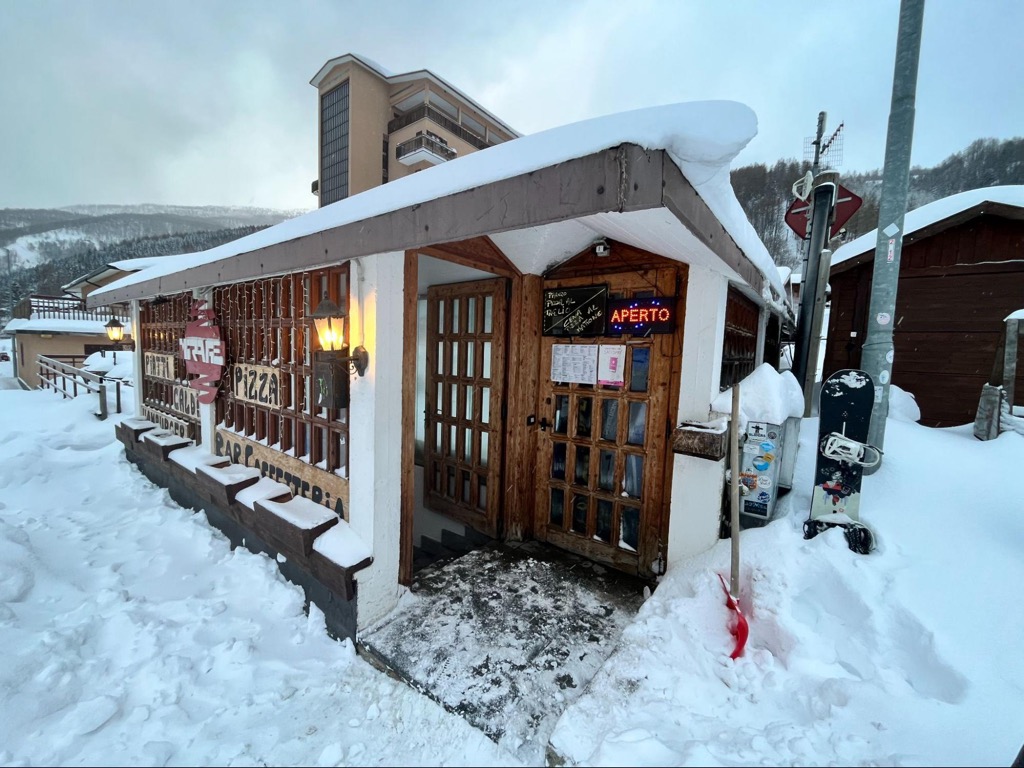
The closest resort by car is the massive Via Lattea (Milky Way) interconnected area between Italy and France defined by Sestriere, the largest and most famous resort of the group. Most ski training venues and events for the 2006 Winter Olympics in Torino were on the slopes of the Via Lattea.
Sestriere is the polar opposite of Prali in almost every way. It is the first purpose-built resort in Italy, dating back to the 1930s. Sestriere feels like a megaresort rather than a traditional village like Prali. However, some of the connected communes are quite charming. Because of its historical roots as farming pasture, Sestriere is also mostly alpine meadow rather than tree and rock.
Sestriere provides access to up to 400 km (249 mi) of pistes in total. Through a massive system of ski lifts, the resort connects to the ski areas of Pragelato, Claviere, San Sicario, Sauze d’Oulx, and Montgenèvre. The latter is a French resort - it’s possible to ski across the border into France.
Sestriere is accessible by car or bus. Buses run regularly up the pass from Perosa Argentina, and it's possible to link to Prali from this junction.
If you are looking for a more luxurious ski getaway but still want to experience Prali, Sestriere is only an hour away by car. There is a much greater concentration of luxury services available.
